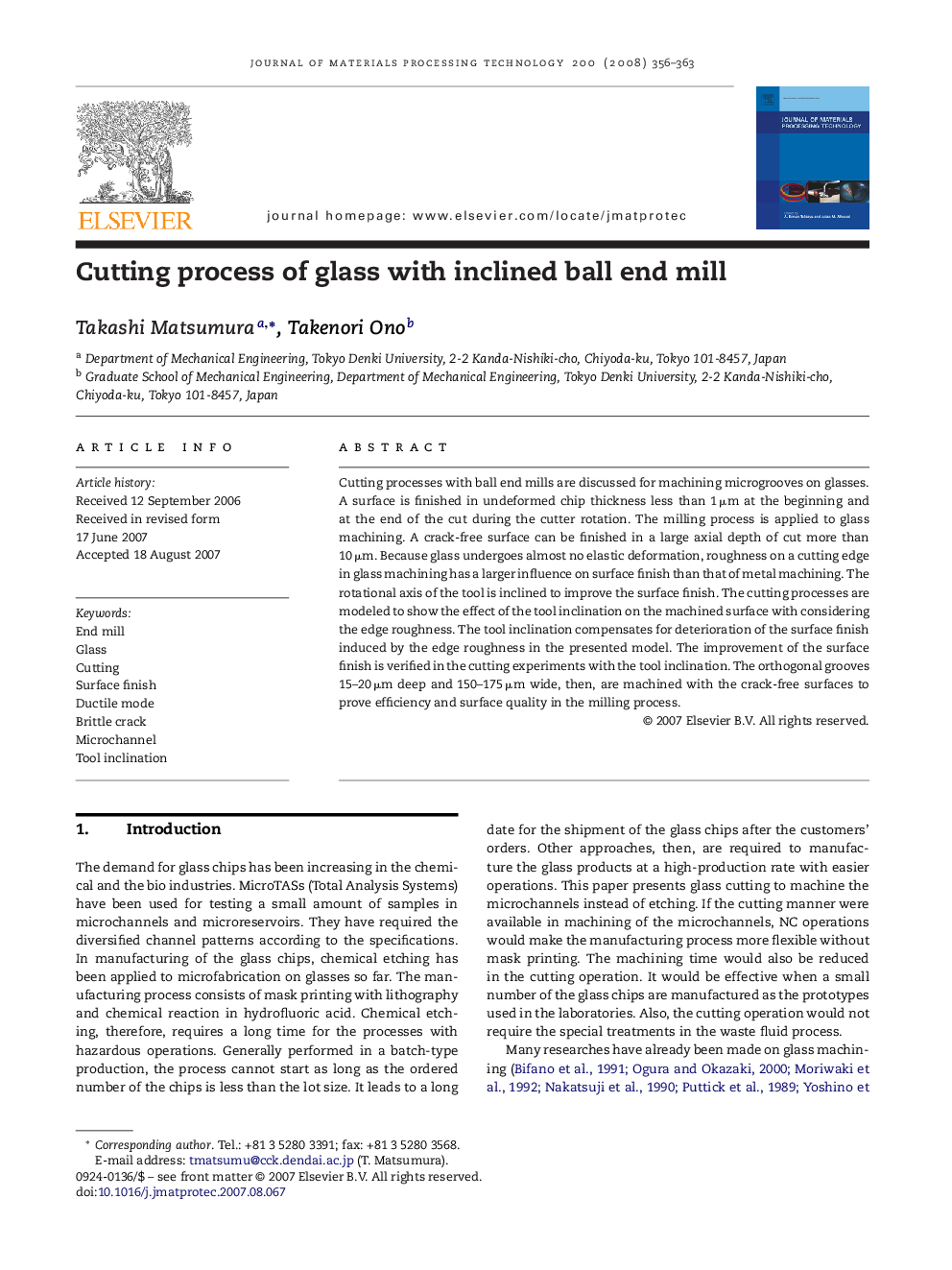| Article ID | Journal | Published Year | Pages | File Type |
|---|---|---|---|---|
| 798737 | Journal of Materials Processing Technology | 2008 | 8 Pages |
Cutting processes with ball end mills are discussed for machining microgrooves on glasses. A surface is finished in undeformed chip thickness less than 1 μm at the beginning and at the end of the cut during the cutter rotation. The milling process is applied to glass machining. A crack-free surface can be finished in a large axial depth of cut more than 10 μm. Because glass undergoes almost no elastic deformation, roughness on a cutting edge in glass machining has a larger influence on surface finish than that of metal machining. The rotational axis of the tool is inclined to improve the surface finish. The cutting processes are modeled to show the effect of the tool inclination on the machined surface with considering the edge roughness. The tool inclination compensates for deterioration of the surface finish induced by the edge roughness in the presented model. The improvement of the surface finish is verified in the cutting experiments with the tool inclination. The orthogonal grooves 15–20 μm deep and 150–175 μm wide, then, are machined with the crack-free surfaces to prove efficiency and surface quality in the milling process.
